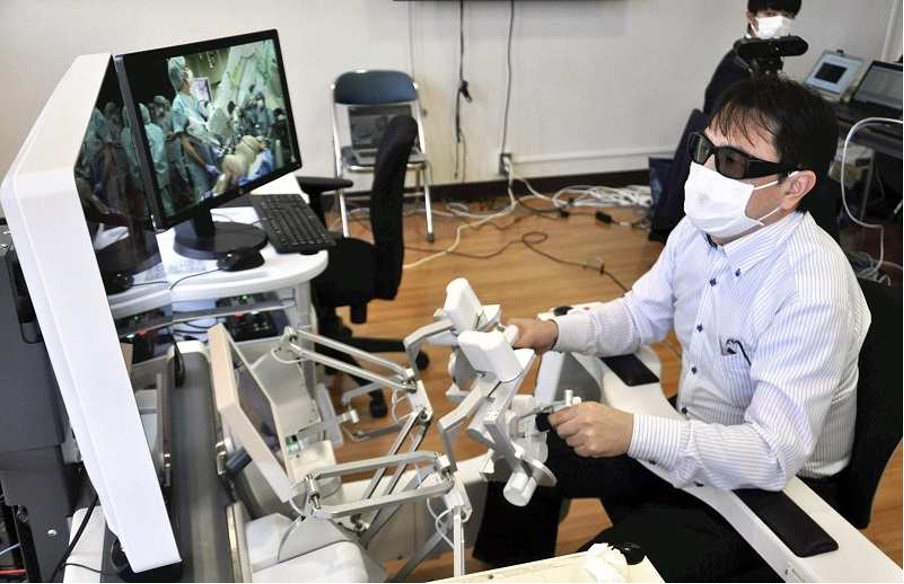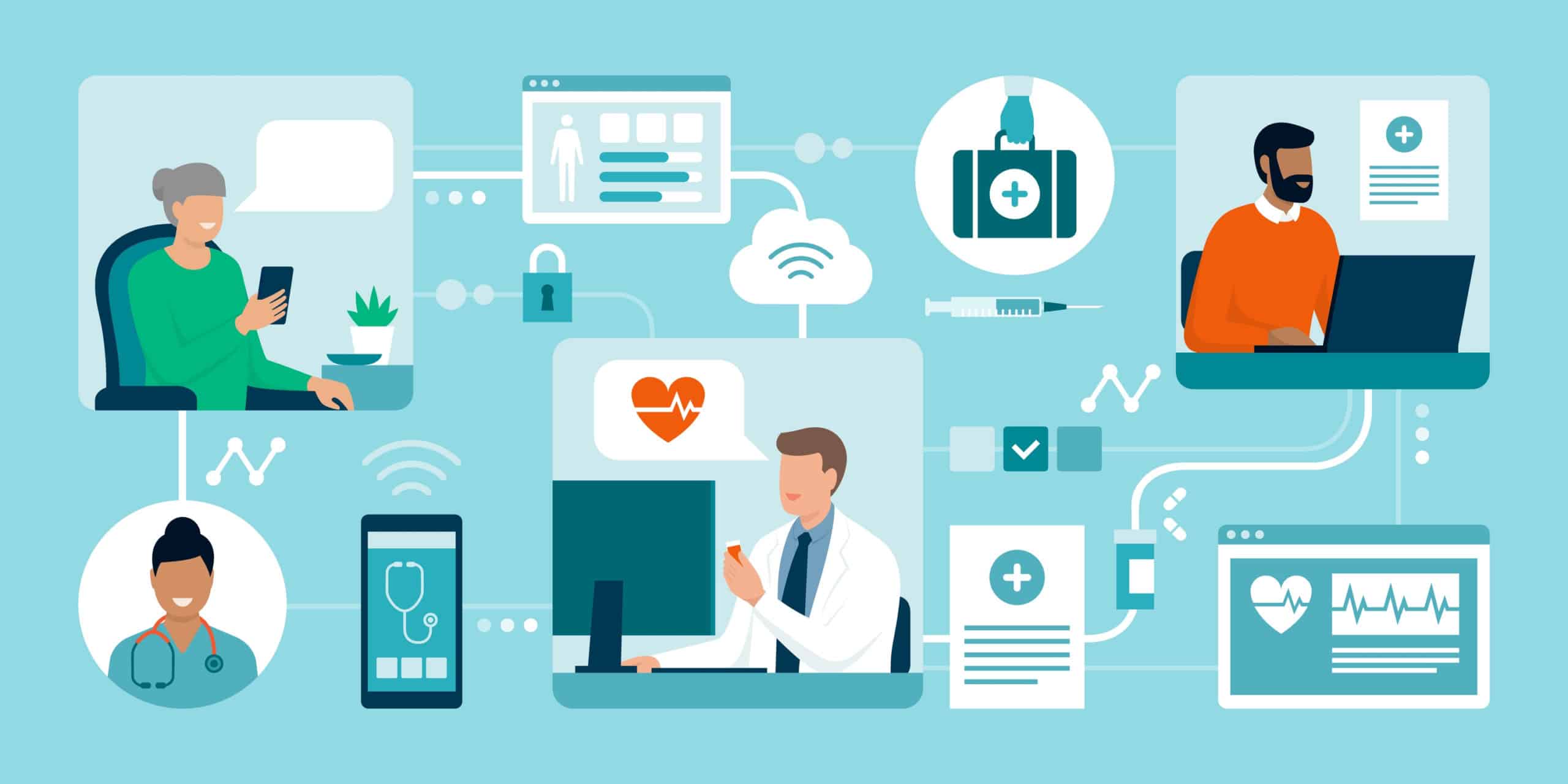By Charalampos Karouzos,
On 7/27/2022, the 117th Congress of the United States of America passed an act regarding a novel approach in the field of health, the act codenamed H.R.4040, with the title “Advancing Telehealth Beyond COVID–19 Act of 2021”. This act, as the name of it suggests, is not an entirely novel step but an expansion of the currently enforced Telehealth program. During the peak of the pandemic of the virus SARS-COV2, while quarantine measures were strictly enforced throughout the world, the US government allowed physicians and other health providers to practice by using modern-day technology either video calls or the more traditional audio-only phone calls. Telehealth as it was named, allowed some practices but for obvious reasons not all, to be performed remotely, wrecking the centuries-old dogma of exclusive face-to-face medical visits. Using the data and experience obtained through this period, the house of Congress, decided as it can clearly be understood by their action to pass the act, that there is a novel manner of practicing medicine available, and in fact, it can greatly benefit patients now and in the future.

To begin, it must be stated that the fact that congress passed the act is not equal to becoming a law. Simply explained, it is the first green light that must be obtained for the new act to eventually be established as a law across all states. At the time of writing this article, the decision of the Senate remains to be published, and if there is a second green light, the act will be passed to the hands of the current president for them to decide. Although far from becoming an established Governmental law, the initial steps have been made, to a decision that will reform the current understanding of providing health services.
Having set the bureaucratic information side, one should know what does Telehealth actually refer to? According to Harvard, “Telehealth is defined as the delivery of health care services at a distance through the use of technology. It can include everything from conducting medical visits over the computer to monitoring patients’ vital signs remotely. Its definition is broader than that of telemedicine, which only includes the remote delivery of health care. Telehealth also includes the training and continuing education of medical professionals”. In addition, another unique characteristic of Telehealth is that it can be performed regardless of time. Patients can be contacted either Synchronously or Asynchronously, and, they can be monitored completely passively by automatically sending the results of tests directly to their physician.
Initially, Telehealth was employed to reduce contact among professionals residing at hospitals (very-high risk individuals for contacting SARS-COV2) and patients, whose health is usually compromised. The primary goal was to minimize contact and spreading of the virus while still providing adequate care to people in need, and in fact, the response of the public was unanticipatedly positive. According to survey studies, around 75% of USA citizens were eager to try virtual care, and a quarter of those asked already had a remote visit.
The possible applications of Telehealth, however, as experts suggest, should not be limited to substituting normal medical visits, but a novel role must be established in the healthcare environment. Previous non-human interacting procedures can easily be transferred to the online world, for example, recording several measurements (blood pressure, heart rate, glucose levels, food intake, etc.) can be obtained by the patient individually or with the help of specific personnel before visiting the primary physician in person. Also, several other applications include; sharing patient information among the different doctors of an individual (primary doctor and specialists), receiving reminders for exam dates, or doing follow-ups with your doctor.
In addition, visiting patients that due to health reasons could not receive proper in-person healthcare can now be accessed by their medical professional through Telehealth, democratizing care. Furthermore, although a subject of great controversy, there are many applications for virtual meetings in education, ranging from classes being available also online, to performing surgeries in the operating room and synchronously live-streaming the surgery to students, or institutions for educational purposes.
In fact, several surgeries have been experimentally performed from a remote location with the main surgeon utilizing a robotic surgical system (Da Vinci System) at one site and on another location having the patient along with a small team of professionals. Such advancements, establish a novel approach in the overall structure of a healthcare system, as at least some human resources will be available country-wide in regards only to the available infrastructure, which especially in emergency cases can be lifesaving bypassing the need for patient transfer to a larger hospital.

But still, the elephant in the room has not been addressed. So far, many applications of the novel technology have been presented but the reasons why we should switch to digital visits are still unknown. The first and probably the most important reason is the cost. Simply observing the current financial status quo of healthcare systems worldwide, one can observe the greatest issue of current medicine. Advancements in research and equipment have radically improved available care to patients, however, the cost of these improvements has surpassed, and is still on the rise, the budget of healthcare-viability.
Using virtual meetings, we can minimize the need for having large primary healthcare facilities, less non-medical personnel will be needed to support the hospitals, no need to travel to the hospital to perform certain procedures. At the same time, minimizing the presence of patients in hospitals drastically reduces their risk of acquiring infections originating from hospitals that are usually devastating for the health of the patients (hospital-acquired infections).
However, although the advancement of virtual healthcare seems promising it should not be mistaken for a panacea, the usage of Telehealth has some important shortcomings. Firstly, not all procedures can be performed in the comforts of one’s home, patients should go into a clinic to perform imaging, blood, and urine work as well as perform the crucial in some conditions hands-on examination. In addition, although data shared among clinics, doctors and patients are private and protected by the law, the security of these very sensitive data is at risk even in the most well-secured online program.
Finally, another crucial financial issue arises with Telehealth and insurance companies. Throughout the emergency period of COVID-19, almost all of the services were covered by the companies, however, the possible lack of trust of the insurance companies in virtual care may lead to a plethora of financial obstacles and out-of-pocket costs for patients.
To conclude, the practical aspect of establishing telehealth is straightforward, the crucial challenge arises from the need to shift the focus of our healthcare systems; previously the physical presence of doctors and hospitals was the beacon of treatment, but with novel advancements, patients are not in seek of a ray of the light of treatment and can have access to health regardless of their physical location. As ATA (American Telehealth Association) states in its policy principles, telehealth acts by “enabling the system to do more good for more people.” In addition, although skeptics express their concerns regarding the quality of medical services provided, data and research clearly show a trend. Should we want to democratize access to treatment and provide equity in healthcare, the pathway of telemedicine is unavoidable, however, establishing set well-structured guidelines regarding Telehealth applications must proceed.
References
- Advancing Telehealth Beyond COVID-19 (Act of 2021). congress.gov. Available here
- Benefits of Telemedicine. hopkinsmedicine.org. Available here
- ATA Policy Principles. americantelemed.com. Available here




